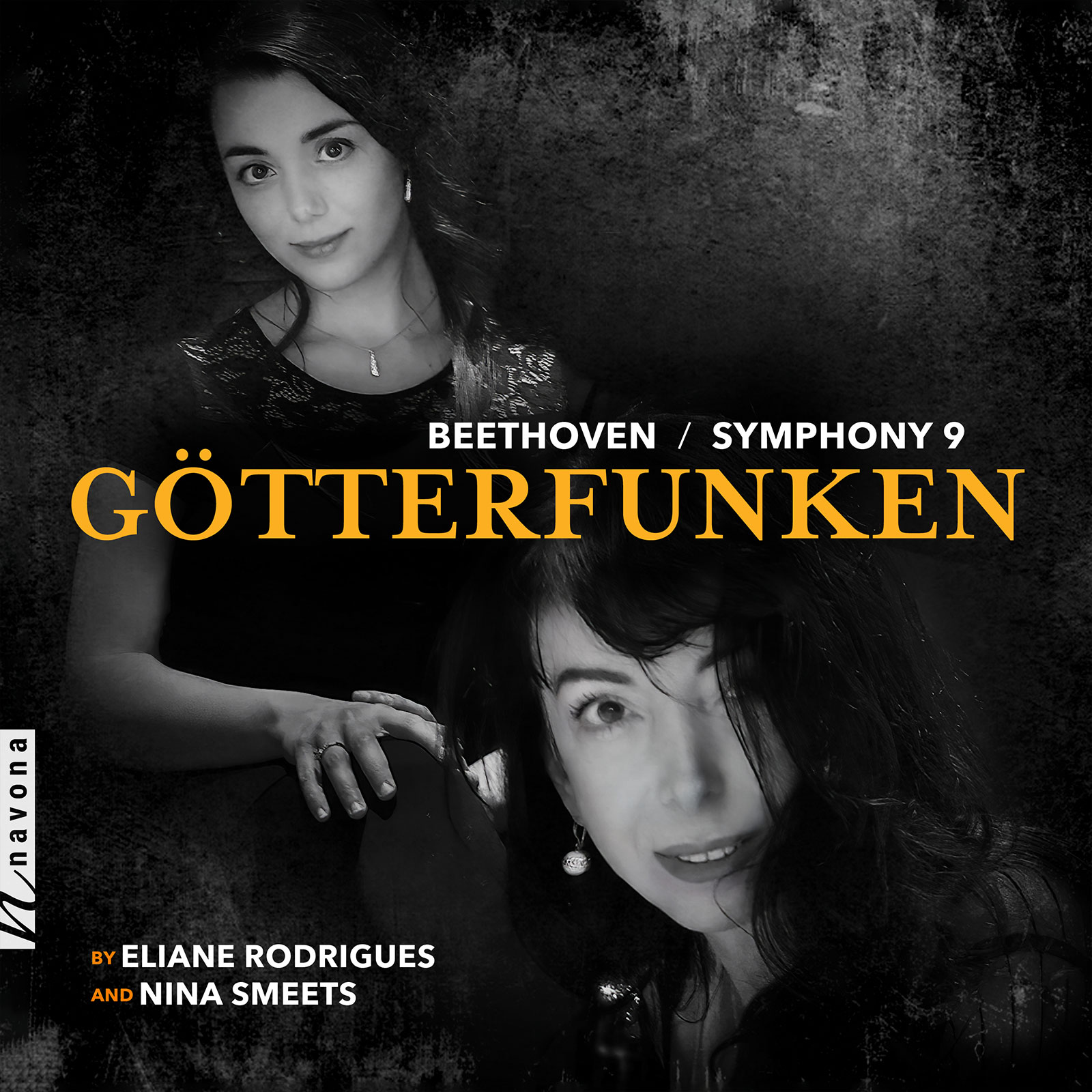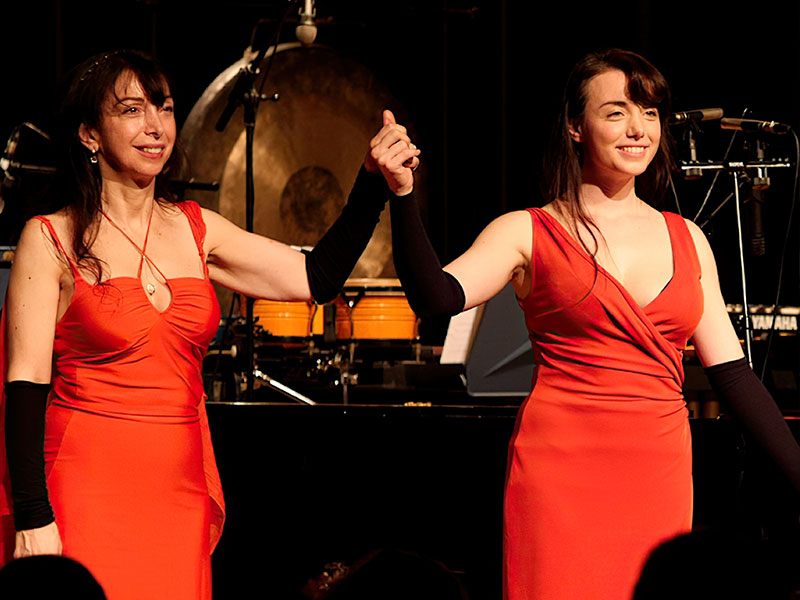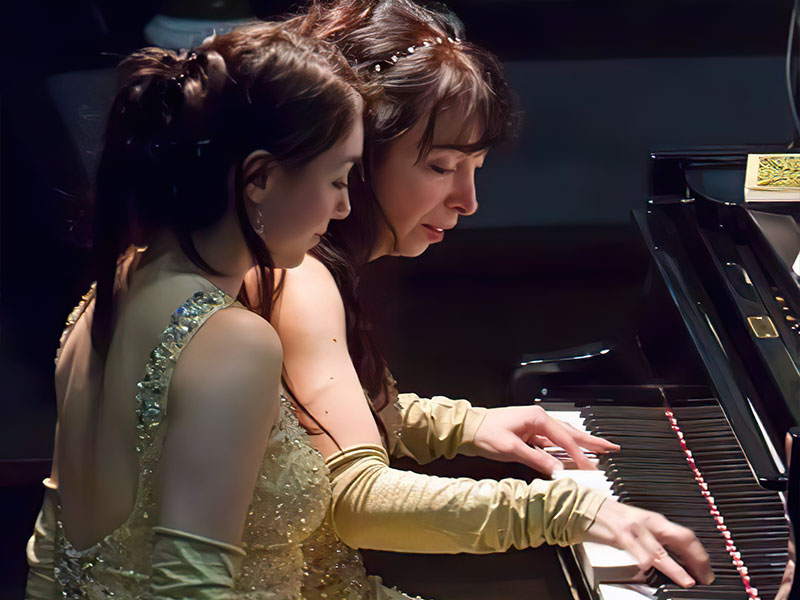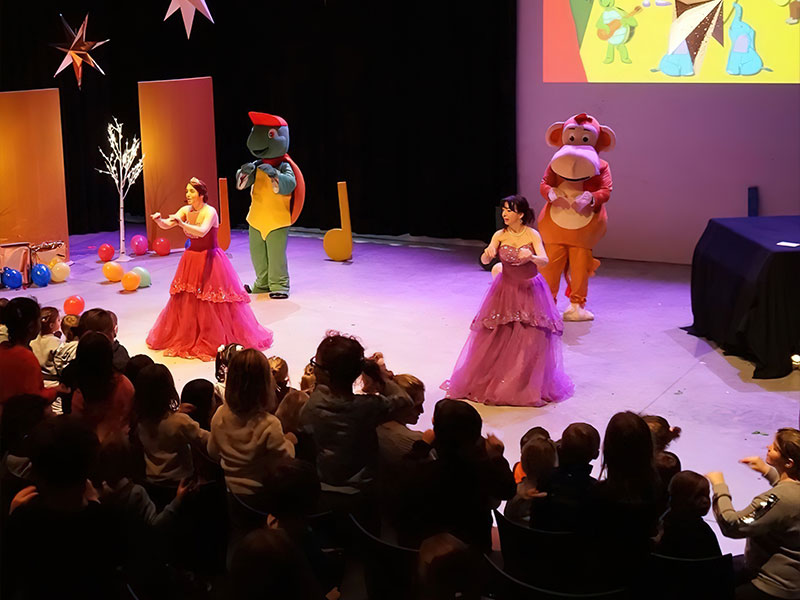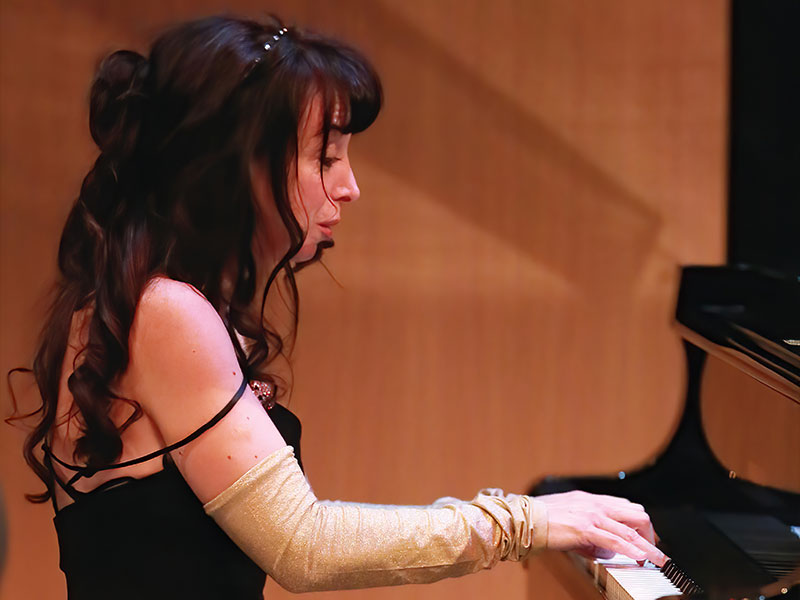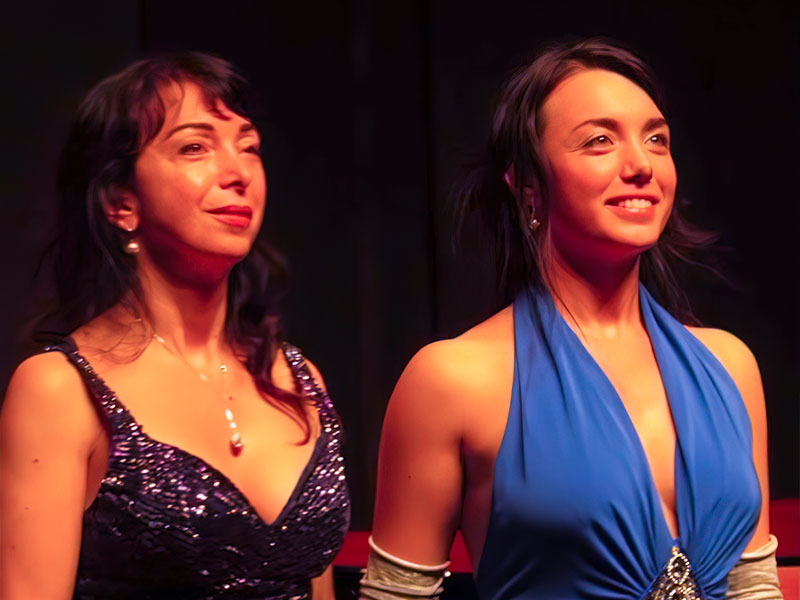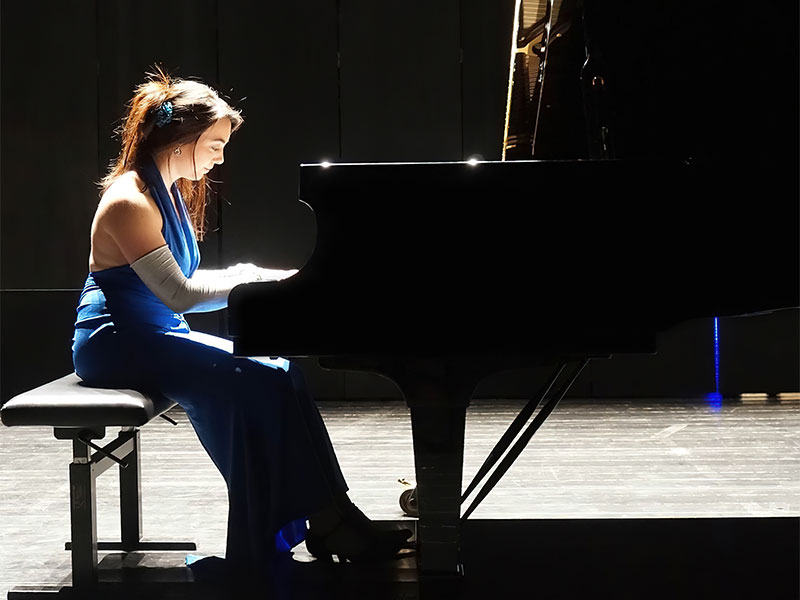Götterfunken
Eliane Rodrigues piano
Nina Smeets piano
Inspired by a transcription by composer Franz Liszt, GÖTTERFUNKEN employs the duality of two grand pianos to reimagine and reinterpret Beethoven’s revered Ninth Symphony. As mother and daughter, pianists Eliane Rodrigues and Nina Smeets infuse their own personal flair with Rodrigues’s arrangement, following the path Beethoven paved while connecting his work to the present day with small instances of improvisation throughout that reflect his original stylistic preferences. Conceptualized in the age of social distancing, GÖTTERFUNKEN was arranged not only to reunite Rodrigues and Smeets through music, but the world as a whole with Beethoven’s magnum opus.
Listen
Stream/Buy
Choose your platform
Track Listing & Credits
| # | Title | Composer | Performer | |
|---|---|---|---|---|
| 01 | Symphony No. 9: I. Allegro ma non troppo, un poco maestoso | Ludwig Van Beethoven, arr. Eliane Rodrigues | Nina Smeets, piano 1; Eliane Rodrigues, piano 2 | 17:02 |
| 02 | Symphony No. 9: II. Molto vivace | Ludwig Van Beethoven, arr. Eliane Rodrigues | Nina Smeets, piano 1; Eliane Rodrigues, piano 2 | 12:33 |
| 03 | Symphony No. 9: III. Adagio molto e cantabile | Ludwig Van Beethoven, arr. Eliane Rodrigues | Nina Smeets, piano 1; Eliane Rodrigues, piano 2 | 19:23 |
| 04 | Symphony No. 9: IV. Finale | Ludwig Van Beethoven, arr. Eliane Rodrigues | Nina Smeets, piano 1; Eliane Rodrigues, piano 2 | 29:16 |
Recorded April 7 – 9, 2021 in the Blauwe Zaal of deSingel in Antwerp, Belgium, on two Steinway Model D concert grand pianos.
Piano tuner Ortwin Moreau moreau-pianoservice.be
Artistic director and sound engineering Korneel Bernolet bernolet.com
Cover photo Karine Gondim, Ernest Smeets
Package photography Ernest Smeets, Sergio Smeets,
Sanne Vanhellemont, Luc de Decker, Gabriel Ferraz
In collaboration with deSingel desingel.be/en/info/mission-vision
DE SINGEL is a welcoming arts house, a meeting place for art without borders in a changing world. In a unique building on a multifaceted arts site, DE SINGEL connects communities with artists and art practices across the globe. Building on a fascinating artistic past, DE SINGEL invites a broad audience to experience music, theatre, dance and architecture in all their variety and to discover fresh, contemporary perspectives.
Executive Producer Bob Lord
Executive A&R Sam Renshaw
A&R Director Brandon MacNeil
A&R Chris Robinson
General Manager of Audio & Sessions Jan Košulič
Production Director Levi Brown
Audio Director Lucas Paquette
Mastering Shaun Michaud
VP, Design & Marketing Brett Picknell
Art Director Ryan Harrison
Design Edward A. Fleming
Publicity Patrick Niland, Sara Warner
Artist Information

Eliane Rodrigues
Hailing from the vibrant heart of Rio de Janeiro, Eliane Rodrigues emerged early on as a musical prodigy, her innate talent blossoming in the colorful tapestry of Brazilian culture. Her exceptional capabilities were first nurtured by Helena Gallo and subsequently honed under the guidance of Arnaldo Estrella, a student of the renowned Alfred Cortot and Yves Nat.
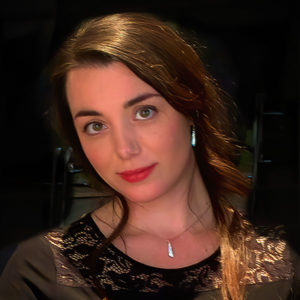
Nina Smeets
When NINA SMEETS makes music, she fully expresses the feelings coming from her heart and soul. She combines a fresh, delicate, and clear sound with a full range of musical colors. Her ability to mesmerize the audience with pure, sincere, and touching performances makes her an artist of unconditional value. Smeets devotes herself fully to music. She’s not only a performer, but also a passionate composer. After the release of her solo piano book and album, Project Reborn, Smeets’s music was nominated for an award in 2016.
Notes
Two people. Two personalities. Two pianos. One heart.
During the COVID-19 pandemic, I’ve seen so much sadness and pain that I wanted to share a moment of joy, love, and friendship. The only thing that came to mind and heart was Beethoven’s 9th Symphony, a version for two pianos with my daughter, Nina.
My arrangement is not a literal transcription of the orchestral score. Rather, it’s based on what I hear and feel when listening to the orchestral music and Franz Liszt’s arrangement for two pianos. The main goal was to follow in Beethoven’s footsteps and connect his work to the present day; to achieve what he would have wanted: to unite all people with just one simple melody.
— Eliane Rodrigues
